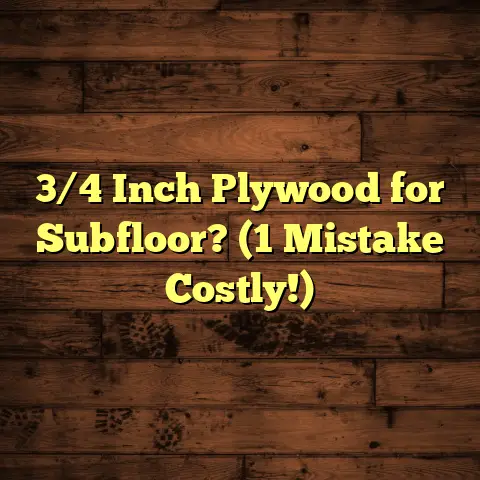Deep Clean Hardwood (1 Pro Method Must!)
Hardwood Floors: One Pro Method You Can’t Ignore!
Think your hardwood floors are clean just because they look shiny? Think again.
The truth is, beneath that glossy surface lurks a world of hidden dirt, allergens, and grime that can ruin the beauty of your flooring and compromise your indoor air quality.
I’ve seen it all when it comes to hardwood floors – the good, the bad, and the downright dirty.And believe me, I know how crucial it is to deep clean those beautiful surfaces regularly.
In this article, I’m going to share the ultimate guide to deep cleaning hardwood floors, focusing on one pro method that you absolutely can’t ignore. Ready to get started?
Section 1: The Importance of Deep
Cleaning Hardwood Floors
We all love the look of gleaming hardwood floors, right? But deep cleaning is about so much more than just aesthetics.
It’s about extending the life of your flooring, improving your indoor air quality, and maintaining the integrity of the wood.
Think of it this way: your hardwood floors are like a sponge, constantly absorbing dirt, dust, allergens, and other contaminants.
Over time, this buildup can damage the finish, leading to scratches, dullness, and even structural problems.
But the benefits don’t stop there. According to the EPA, indoor air can be two to five times more polluted than outdoor air.
And guess what? Dirty floors are a major contributor to this problem.
Regular deep cleaning can remove these pollutants, creating a healthier living environment for you and your family.
Plus, let’s be honest, who wants to live in a house with dirty floors? A clean home is a happy home, and deep cleaning your hardwood floors is a big step in that direction.
Section 2: Understanding Hardwood
Flooring
Before we dive into the pro method, let’s talk about hardwood flooring basics.
Not all hardwood floors are created equal, and understanding the type of flooring you have is crucial for choosing the right cleaning method.
There are two main types of hardwood flooring: solid and engineered.
Solid hardwood is made from a single piece of wood, while engineered hardwood consists of multiple layers of wood veneer bonded together.
Engineered hardwood is more resistant to moisture and temperature changes, making it a popular choice for basements and other areas prone to humidity.
The finish on your hardwood floors also plays a big role in determining the best cleaning approach.
Common finishes include polyurethane, oil-based finishes, and wax.
Polyurethane is the most common finish, known for its durability and resistance to scratches and stains.
Oil-based finishes penetrate the wood, providing a natural look and feel, but they require more maintenance.
Wax finishes are less common these days, but they offer a beautiful sheen and require regular waxing to maintain their appearance.
Now, let’s bust some common myths about cleaning hardwood floors.
One of the biggest mistakes people make is using too much water. Water can seep into the wood, causing it to warp, swell, or even rot.
Another common error is using harsh chemicals, which can damage the finish and leave a dull residue.
Finally, avoid using abrasive cleaning tools, such as steel wool or scouring pads, as these can scratch the surface of your floors.
Section 3: The Pro Method for Deep
Cleaning Hardwood Floors
Alright, let’s get down to business. I’m going to share the pro method for deep cleaning hardwood floors that I’ve used for years with amazing results.
This method stands out because it’s effective, safe for your floors, and relatively easy to do.
It involves using a combination of gentle cleaning solutions, microfiber mops, and a little elbow grease to remove dirt, grime, and buildup without damaging the finish.
Preparation
First, let’s gather the tools and supplies you’ll need:
- Microfiber Mop: I recommend using a flat microfiber mop with replaceable pads. These mops are gentle on hardwood floors and effectively trap dirt and dust.
- Two Buckets: One for clean water and one for the cleaning solution.
- Hardwood Floor Cleaner: Choose a pH-neutral cleaner specifically designed for hardwood floors. Avoid using vinegar, ammonia, or other harsh chemicals.
- Spray Bottle: For applying the cleaning solution to the mop pad.
- Microfiber Cloths: For wiping up spills and cleaning corners.
- Broom or Vacuum: For pre-cleaning the floors.
Procedure
Now, let’s walk through the step-by-step instructions for deep cleaning your hardwood floors:
- Pre-Cleaning: Start by removing all furniture, rugs, and other obstacles from the area. Then, sweep or vacuum the floors to remove loose dirt, dust, and debris.
- Prepare the Cleaning Solution: Mix the hardwood floor cleaner with water according to the manufacturer’s instructions. Pour the solution into one bucket and fill the other bucket with clean water.
- Dampen the Mop Pad: Dip the microfiber mop pad into the cleaning solution, wring it out thoroughly until it’s just damp. You don’t want the mop pad to be soaking wet, as this can damage the floors.
- Mop the Floors: Working in small sections, mop the floors using a back-and-forth motion. Apply gentle pressure to remove dirt and grime. Rinse the mop pad in the clean water bucket as needed and wring it out thoroughly before continuing.
- Dry the Floors: After mopping, use a clean, dry microfiber cloth to wipe up any excess moisture. This will help prevent water from seeping into the wood.
- Clean Corners and Edges: Use a damp microfiber cloth to clean corners, edges, and other hard-to- reach areas.
- Allow to Dry: Let the floors air dry completely before replacing furniture or rugs. This usually takes about 30 minutes to an hour.
Post-Cleaning Care
Once your floors are clean and dry, here are a few tips for maintaining their shine:
- Use a Doormat: Place doormats at all entrances to trap dirt and debris before they get onto your floors.
- Clean Up Spills Immediately: Wipe up spills as soon as they happen to prevent staining and water damage.
- Use Furniture Pads: Place felt pads under furniture legs to prevent scratches and dents.
- Avoid Wearing Shoes: Encourage family members and guests to remove their shoes before walking on the hardwood floors.
Section 4: Common Mistakes to Avoid
During Deep Cleaning
Now that you know the pro method, let’s talk about some common mistakes to avoid during deep cleaning:
- Using the Wrong Cleaner: As I mentioned earlier, avoid using harsh chemicals, such as vinegar, ammonia, or bleach, as these can damage the finish on your floors. Always use a pH-neutral cleaner specifically designed for hardwood floors.
- Using Too Much Water: Over- wetting your floors can cause them to warp, swell, or rot. Always wring out the mop pad thoroughly before mopping and use a dry microfiber cloth to wipe up any excess moisture.
- Neglecting Corners and Edges: Don’t forget to clean corners, edges, and other hard-to-reach areas. Use a damp microfiber cloth to wipe away dirt and grime in these areas.
- Not Pre-Cleaning: Skipping the pre-cleaning step can leave dirt and debris on your floors, making it harder to achieve a deep clean. Always sweep or vacuum the floors before mopping.
- Using Abrasive Cleaning Tools: Avoid using steel wool, scouring pads, or other abrasive cleaning tools, as these can scratch the surface of your floors.
Section 5: Maintenance Tips for
Long-Lasting Hardwood Floors
Deep cleaning is essential, but it’s also important to maintain the cleanliness of your hardwood floors between deep cleanings.
Here are some practical tips for keeping your floors looking their best:
- Daily Sweeping or Vacuuming: Sweep or vacuum your floors daily to remove loose dirt, dust, and debris.
- Weekly Mopping: Mop your floors weekly using a pH-neutral cleaner and a microfiber mop.
- Use Doormats: Place doormats at all entrances to trap dirt and debris before they get onto your floors.
- Clean Up Spills Immediately: Wipe up spills as soon as they happen to prevent staining and water damage.
- Use Furniture Pads: Place felt pads under furniture legs to prevent scratches and dents.
- Avoid Wearing Shoes: Encourage family members and guests to remove their shoes before walking on the hardwood floors.
- Consider a Professional Cleaning: Schedule a professional hardwood floor cleaning every 12-18 months to remove stubborn dirt and grime and restore the shine to your floors.
Here’s a simple cleaning schedule you can follow:
| Task | Frequency |
|---|---|
| Sweep/Vacuum | Daily |
| Mop | Weekly |
| Deep Clean | Quarterly |
| Professional Clean | Annually |
Section 6: Conclusion
So, there you have it – the ultimate guide to deep cleaning hardwood floors, including the pro method that you can’t ignore.
By following these tips and techniques, you can extend the life of your floors, improve your indoor air quality, and maintain the beauty of your home.
Remember, deep cleaning hardwood floors is an investment in your home and your health.
It’s a small price to pay for the peace of mind that comes with knowing your floors are clean, healthy, and beautiful.
So, what are you waiting for? Grab your microfiber mop, gather your supplies, and get ready to transform your hardwood floors from dull to dazzling.
Your floors – and your family – will thank you for it!





